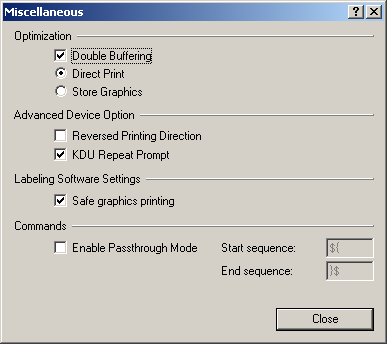As a consumer, getting support for Apple’s devices is pretty easy. If it’s in warranty or you have AppleCare, it’s not hard to get something fixed. As a developer, however, working with Apple is … not so easy.
Apple has one of my widgets available for download, which periodically gets updated. The usual procedure is to log in to Apple, update a few fields, point to the new URL, and everything’s fine in a day or two.
Lately, though, the form has been failing with the error, “Please fill in all required fields.” There’s no indication of which fields or what to do, so after weeks of trying different combinations of things, I contacted Apple Developer Support.
Dear Apple Developer Support:
I maintain an OSX widget available at [URL.] I am trying to update it using the form at https://developer.apple.com/submission/mac/form_edit.php
However, the form *always* returns the same error: “Please fill in all required fields.”
There is no indication of what fields are not filled out, and I have meticulously filled out every single field. I have attempted to do so from every major browser, including Safari, Firefox, IE, and Chrome, from every OS including OSX and Windows, and from several countries including the US, Canada, and India.
I cannot get this form to work. Is there anything that can be done? Can you tell me what this form wants?
Almost immediately, I got a form letter that they are working diligently on whatever my issue may be, and then a few days after that:
Please include the line below in follow-up emails for this request.
Follow-up: 136749696
Re: Software Downloads feedback
Hello,
Thank you for contacting Apple Developer Support regarding Software Downloads.
Feedback regarding Software Downloads may be submitted to Apple via the Mac OS X web
site:
…
Please know that the email address you have written to is
used to provide program-level support to members of the Apple Developer Program. We are unable to provide general product support via this Apple channel.
Thank you for understanding our support policies. We appreciate the time that you have taken to send your comments to Apple.
Best regards,
Yutaka Ikeda
Apple Developer Support
So, I’m essentially told that they don’t help with downloads, only developer issues, and I’m directed back to the contact page where I found the address I sent my original email to.
Dear Apple Developer Support:
I am not trying to download anything. I am trying to use the developer site, which is not working.
Omitted: Several back and forth emails where I beg somebody to read my request, and not just send me a random form letter directing me to the contact page. Also omitted: I repeat the problem each time.
Please include the line below in follow-up emails for this request.
Follow-up: 136749696
Re: iOS Developer Program
Hello,
Please know in order to consider your request, we need you to furnish the following
information:
– Step by step information to reproduce the issue
– Screenshots reflecting the error messages
– System hardware and operating system configuration
– Browser and version
– Indicate type of connection (i.e., cable, DSL, corporate network, etc.)
– Indicate if you are behind a firewall
– Provide text for any error messages that you have received
– Indicate if you are behind a proxy server
Thank you for your assistance.
Best regards,
Jeremy Nickel
Apple Developer Support
Wait, what? Well, fine, at least I’ve been routed to the correct department.
Dear Apple Developer Support:
Are these delaying tactics? Because seriously, the initial instructions I
included aren’t hard to follow.
Go here:
https://developer.apple.com/submission/mac/form_edit.php
Update the version. Or anything. Use any browser. It doesn’t matter.
Naturally, I’m logged in as me.
Watch it tell you you’re missing a required field.
I usually stop here, but for the full experience, you can spend weeks
trying to get somebody to take a look and provide anything other than a
moronic form response or a nonsensical request for more information.
A few days later, I got this response:
Please include the line below in follow-up emails for this request.
Follow-up: 136749696
Re: iOS Developer Program
Hello,
Please know in order to consider your request, we need you to furnish the following
information:
– Step by step information to reproduce the issue
– Screenshots reflecting the error messages
– System hardware and operating system configuration
– Browser and version
– Indicate type of connection (i.e., cable, DSL, corporate network, etc.)
– Indicate if you are behind a firewall
– Provide text for any error messages that you have received
– Indicate if you are behind a proxy server
Thank you for your assistance.
Best regards,
Jeremy Nickel
Apple Developer Support
Yes. It’s the exact same form letter. Frankly, at this point, I hate Jeremy Nickel, and I want him to burn in hell. Is it really so difficult to understand that a web page is broken? Seriously, Jeremy, if you can’t be bothered to actually read any of the email you get, are you really in the right position?
Dear Apple Developer Support:
Please do not send me this useless form letter again, I’ve answered every
goddamned question more than once. If you have an actual question, feel
free to ask. If you want to send me a form letter, please just tell me
directly “I’m really too stupid to handle this,” it’s more honest and
direct.
> Please include the line below in follow-up emails for this request.
>
> Follow-up: 136749696
>
> Re: iOS Developer Program
>
> Hello,
>
> Please know in order to consider your request, we need you to furnish the
> following information:
>
> – Step by step information to reproduce the issue
Provided. Three times.
> – Screenshots reflecting the error messages
Imagine the screen, with a red “Please fill out all required fields” on
it. If you seriously need a screen shot of that, let me know.
> – System hardware and operating system configuration
I’ve tried several dozen. It does not fucking matter.
> – Browser and version
I’ve tried several dozen. Safari, Firefox, IE, whatever.
> – Indicate type of connection (i.e., cable, DSL, corporate network,
> etc.)
Again, tried on dozens.
> – Indicate if you are behind a firewallÂ
No.
> – Provide text for any error messages that you have receivedÂ
Once again, “Please fill out all required fields.”
> – Indicate if you are behind a proxy server
No. And yes. What the fuck? Who fucking cares? I’m just going to get the same fucking form letter from you anyway.
Tell you what, Jeremy, just fucking GO to the URL, and if it miraculously works for you, send me your operating system, your browser version, and whatever the fuck you filled in to make it work.
 Once in the Stamps.com software, “printing on” can be set to “Zebra/Eltron Type – Standard 4×6 label – roll” and then selecting “ZDesigner LP 2844” as the destination. Of course, I recommend using “print sample” first, to make sure that everything is dark enough and aligned properly before printing actual postage.
Once in the Stamps.com software, “printing on” can be set to “Zebra/Eltron Type – Standard 4×6 label – roll” and then selecting “ZDesigner LP 2844” as the destination. Of course, I recommend using “print sample” first, to make sure that everything is dark enough and aligned properly before printing actual postage.




